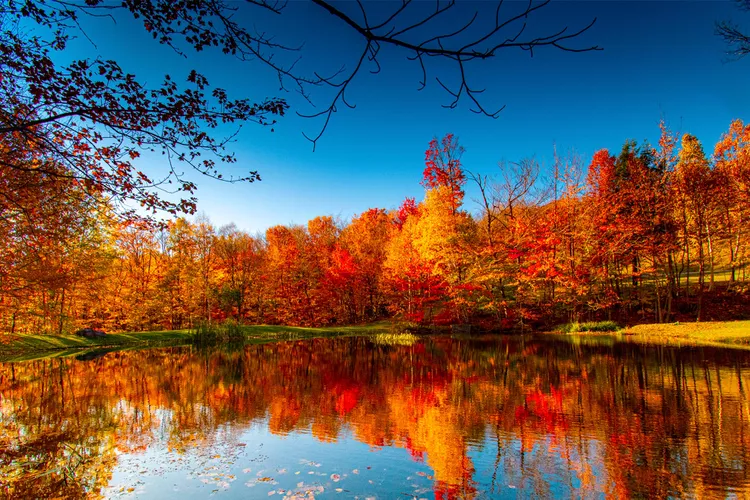Changing leaves and brilliant colors can be a breathtaking sight on fall trees, but when do leaves change color? This natural show can vary from year to year. That's because the process of leaves transitioning to fall colors relies on the right combination of temperature and moisture. Depending on weather conditions, leaves could go from green to brown to falling to the ground some years, while they may look colorful for many weeks during other years.
One of the best ways to find out what to expect for fall tree colors in your area is to check out this interactive map created by Smoky Mountains, which predicts peak fall colors across the United States by county. In addition to using climate data to make the map, the website allows users to report what fall is like in their county each day to improve the accuracy of the map. From September 4 to November 20, the fall tree foliage map tracks seven stages of fall color, starting with "no change" to "past peak." The best color is represented by cherry red.
Peak Fall Color by Region
The 2024 forecast predicts the first parts of the country will see peak fall tree colors around October 2. This area includes northern parts of the country, like Washington State, Idaho, Montana, North Dakota, and Minnesota, as well as parts of Northeastern New York, Vermont, New Hampshire, and Maine. By October 23, the peak will expand to Northern Oregon, Wyoming, South Dakota, Northern Indiana, Ohio, Pennsylvania, and New Jersey, as well as regions in California and Arizona.
By October 30, most states in the West, Midwest, and Southeast will join in, while some areas, such as the Rocky Mountain region and the northern parts of the country, will be past their peak fall color. Finally, Southerners will see some attractive foliage and fall color from November 6-13. By November 20, most of the United States will pass prime time, and wintry weather will soon arrive.
The color-changing map above is based on data from the National Oceanic and Atmosphere Administration (NOAA) on historical temperatures, precipitation, and forecasts. Smoky Mountains plugs the data into an algorithm that factors in the elements of meteorology (temperature, moisture, sunlight, and precipitation) that impact peak fall tree color. Although there's no way to predict with 100% accuracy what nature will do, the data collected each year helps to make this map the best prediction possible.
Trees With the Best Fall Colors
When your local trees start turning color, you may notice some have more fiery hues than others. For example, you can almost always count on maples to put on a dazzling show, especially sugar and red maples, native to much of Eastern and Central North America. No wonder they're honored as the state tree of New York, West Virginia, Wisconsin, Vermont, and Rhode Island.
According to the Arbor Day Foundation, several other deciduous tree species also produce traffic-stopping fall tree colors across different regions of the United States. For example, in the southern areas, watch for sourwood and sweetgum trees, which turn vivid shades of red, yellow, and purple. Across the Rocky Mountains, aspens light up the landscape with golden leaves that practically glow in the right light.
Why Do Leaves Change Color in the Fall?
Fall colors are present in leaves throughout the entire growing season. However, they usually don't appear until the weather turns chilly. Cool air temperatures tell deciduous plants that it's time to prepare to go dormant for the winter by shedding their leaves. That's when the green pigment known as chlorophyll fades, allowing all the beautiful reds, oranges, and yellows to show.




















